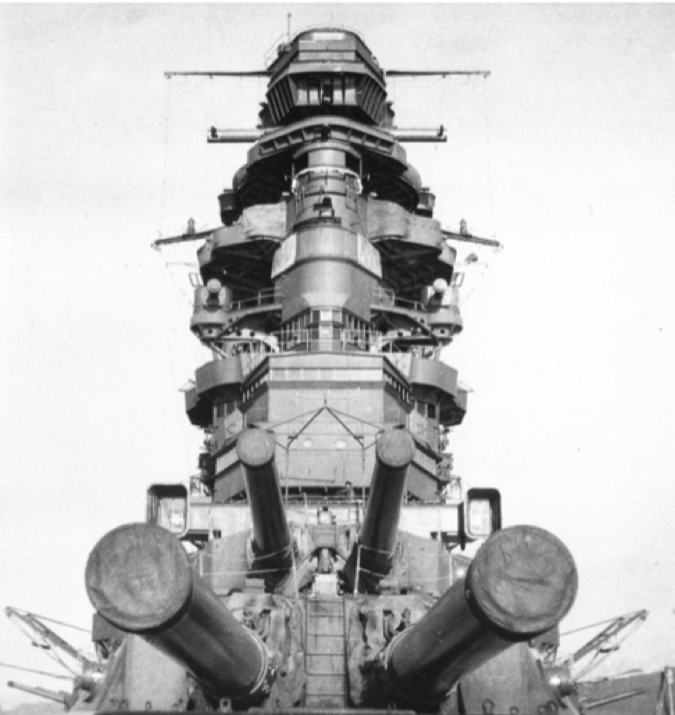Last Cruise of the Battleship Nagato
This series of stories is dedicated to the memory of Edward Smith Gilfillen, whose recollections should have been told long ago, and for all the Atomic Veterans whose lives were cut short due to exposure to radiation at Operation Crossroads at Bikini Atoll and the Nevada Test Site, among other places.
Last Cruise of the Battleship Nagato

The Battleship That Started the Pacific War And Ushered in
The Atomic Age
By
Edward Smith Gilfillen
With Vic Socotra
Prelude:
Ed’s story came to me in a curious manner, but it worth a reprise. I had it in my files for years, a pass-down from my aeronautical and space-imaging pioneer Uncle Jim. He told me I did not have to return it, and at this distance from his passing, would be difficult anyway. His friend Ed had written down an extraordinary tale of the immediate post-war years of the Occupation of Japan by American Forces.
It was not until my friendship with retired Rear Admiral Mac Showers began in the 1990s that I was at a unique crossroads of history, since he had arrived in Japan just days after the Empire surrendered.
I was galvanised. I had been dragooned into the nuclear command-and-control business early in my Navy Career, and was pleased to be out of it. Later, the opportunity to tour the Nevada Test Site with it’s haunting relics of unimaginable fury through a Congressional Delegation boondoggle and the full impact of the nuclear age started to dawn on me. Fully dawn, I mean, seeing real nuclear weapons is sobering enough on loading drills.
Seeing evidence of what they can do, in the context of our relations with North Korea and Iran these days, is as bracing as a double shot of tequila.
Or two.
I went back to the files and found the words of a man who had been there for the third and fourth operational test of the atomic bomb. He was the last Executive Officer of the former IJN Nagato had to say about it. Here are some of his words. There will be more of them.
July 1946, Bikini Atoll:
“After we abandoned ship, just as we had for the ABLE shot to get a safe distance from the coming atomic explosion, the pirate American crew of ex-IJN Nagato was dispersed among the dozens of support ships. A dozen of us found ourselves on RADM Blandy’s Joint Task Force ONE flagship, Mount McKinley (AGC-7), which was anchored about a dozen miles away from the target ships in the lagoon.
We jokingly called ourselves the BAKER’S DOZEN, since we expected to return to the mighty battleship we had sailed with a rag-tag crew from Japan once the test was complete. We would then try to clean the ship up, as we did after test ABLE,
from any fallout and begin preparations for the third in the series, blast CHARLIE. That one was planned to demonstrate the properties of an atomic explosion in deep water.
As it turns out, it did not happen that way, and like Test ABLE, there was a SNAFU (Situation Normal, All Fucked UP) that changed everything.
We rose early on the morning of the 25th of July and got chow in the wardroom before venturing out on deck to find a good perch to watch the test. We marveled at the VIP guests who were aboard to witness the event.
SECNAV James Forrestal himself was there, in plain unadorned khakis, along with congressmen and other Washington people interested in the new atomic technology. CROSSROADS was anything but secret, as opposed to the Manhattan Project that gave birth to the Bomb. These tests were intended to publicly demonstrate the might of this new technology to the world, and it certainly did that.
We were told that shot BAKER was expected to cause more damage to the target fleet than ABLE because it was an underwater detonation and closer to the surface. It was also expected to produce more radioactive contamination in Bikini Lagoon, although no one knew how much more. As it turned out, contamination from BAKER caused major problems that persisted for months and threatened the overall success of the entire CROSSROADS operation.
Pre-shot procedures were essentially the same as for test ABLE, an air burst detonation. Sixty-eight target ships were moored in the lagoon and 24 small craft were beached on Bikini; all personnel were evacuated to the support fleet, which retreated upwind; and VIP observers and the press awaited the shot.
There was one important difference from the first test. This time we were encouraged to watch it directly. The scientists told us that since the blast was going to be at a depth of ninety feet, there would be no fireball, so we needed no goggles or smoked glasses.
We were on deck, looking toward the low dark silhouette of LSM-60, the heavily modified landing ship that lowered the bomb below the surface of the lagoon. The minutes clicked by, and we were advised over the ship’s loudspeaker that preparations were complete and M-Hour would be at 0835. I checked my watch to best advantage and moved to the rail to get the best view I could.
The signal was broadcast to the mast over the landing ship as planned, and then things became very interesting. Very interesting.
Copyright 2019 Vic Socotra
www.vicsocotra.com
